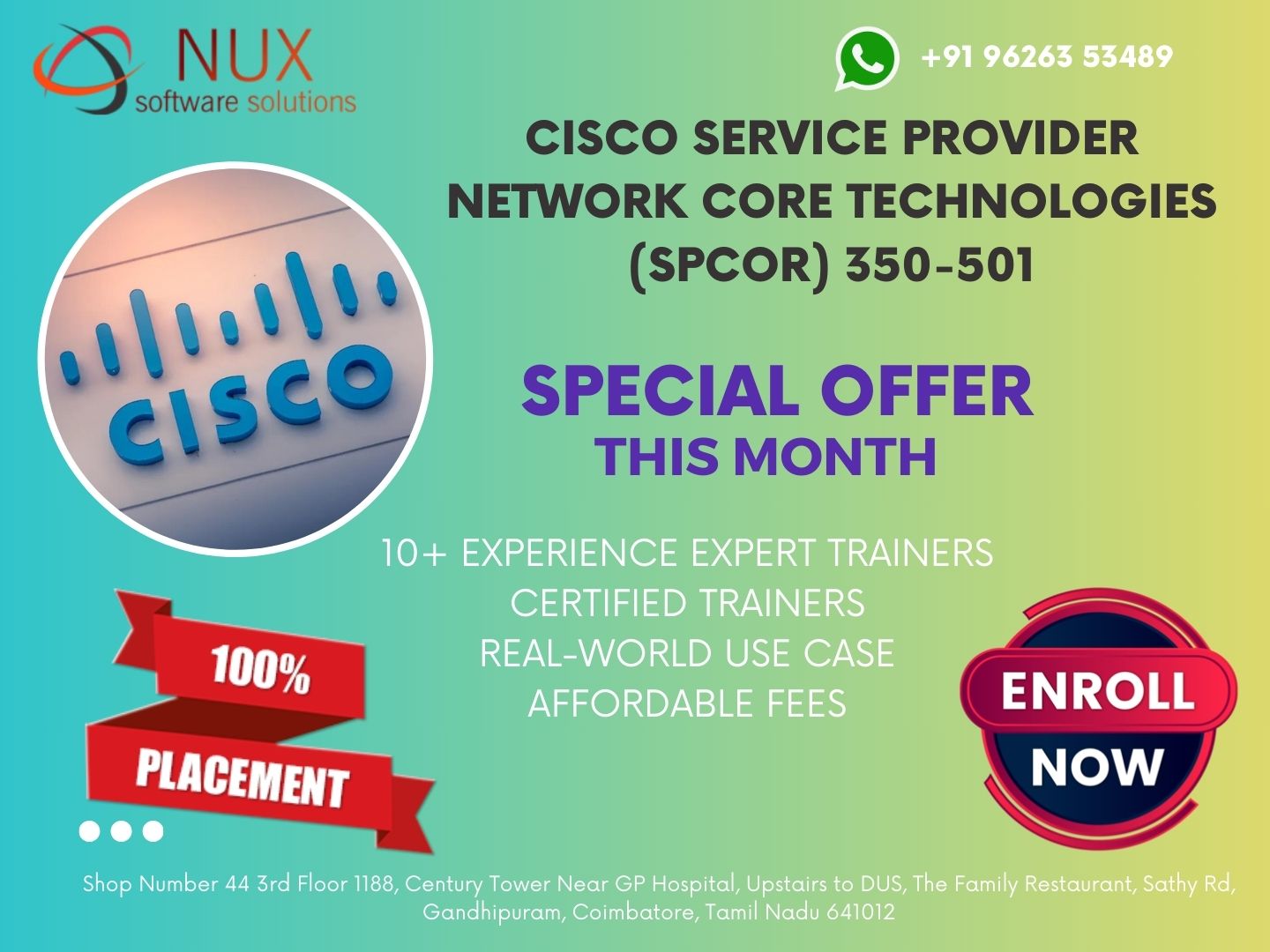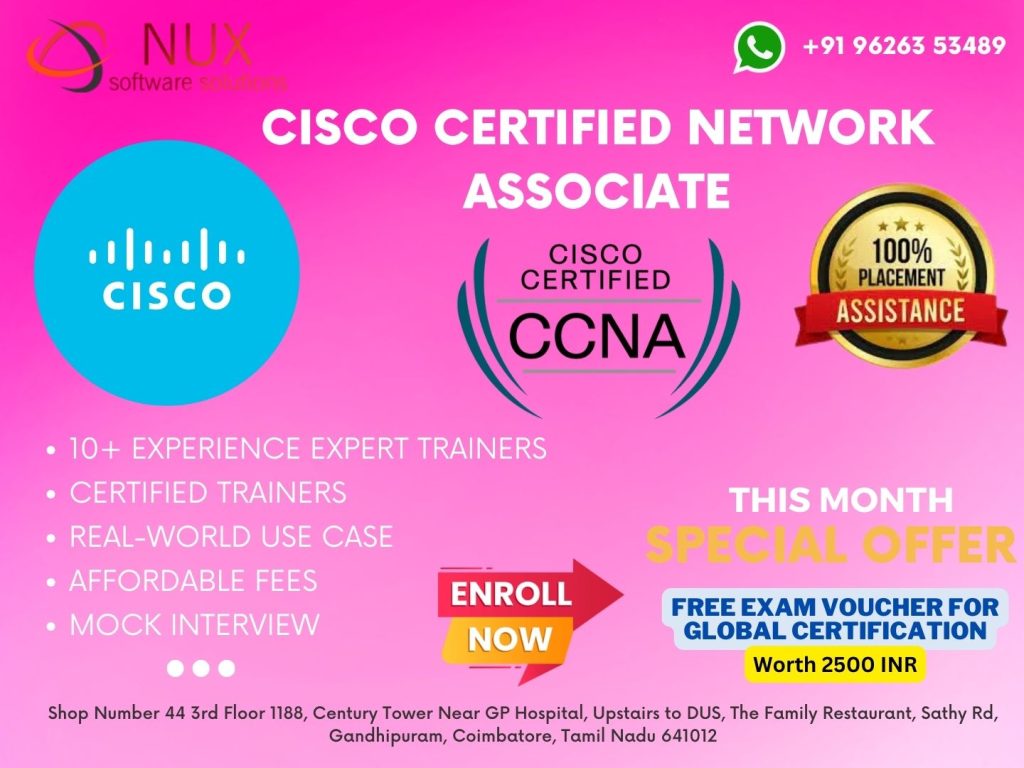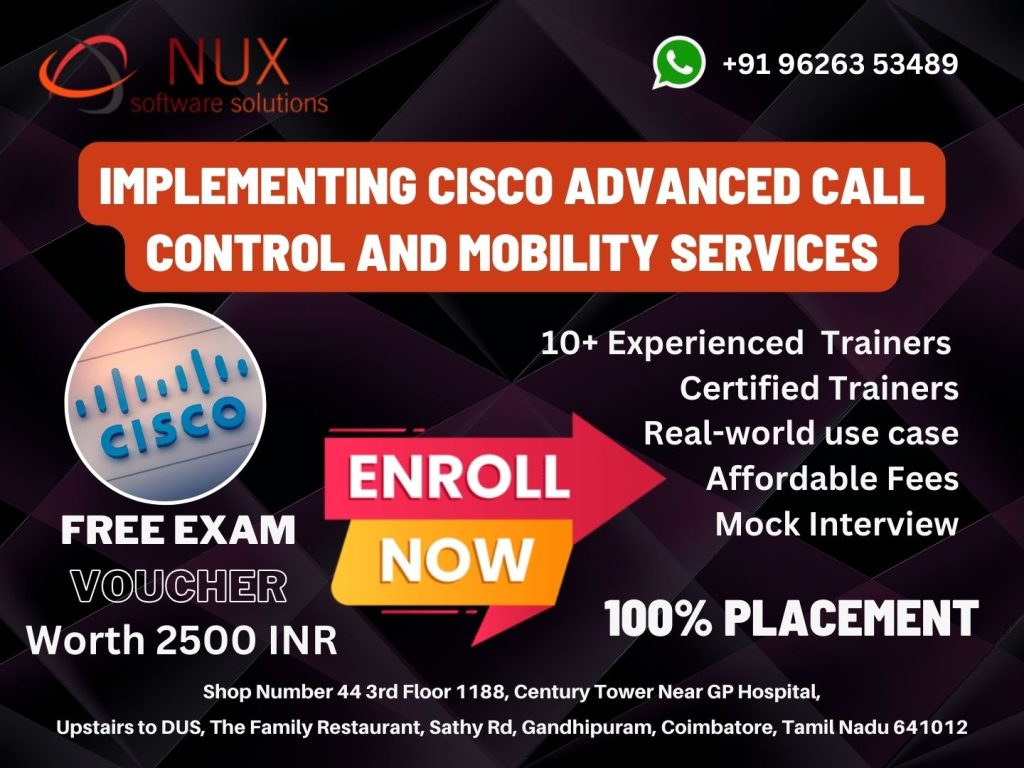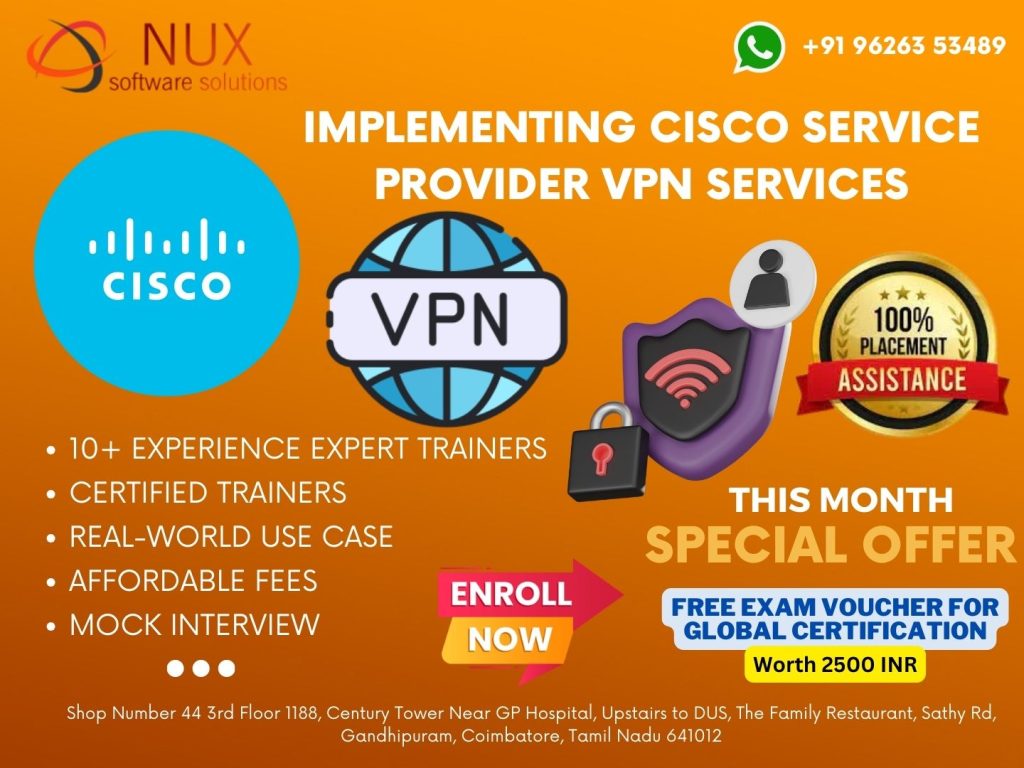Cisco Service Provider Network Core Technologies (SPCOR) 350-501

Cisco SPCOR 350-501 Training in Coimbatore
(Service Provider Network Core Technologies Certification)
Course Overview
The Cisco Service Provider Network Core Technologies (SPCOR 350-501) course is designed for networking professionals aiming to develop advanced skills in service provider core networks. As a core requirement for the CCNP Service Provider certification, this course equips learners with deep technical knowledge in areas such as routing, architecture, services, QoS, security, and automation—all within a service provider infrastructure.
At Linux Training Center in Coimbatore, our Cisco SPCOR course is delivered through hands-on labs, expert-led sessions, and real-time scenarios to help you build and manage robust, scalable service provider networks.
Why Choose SPCOR 350-501?
Modern service providers face the challenges of scale, uptime, and multi-service delivery. The SPCOR 350-501 course prepares professionals to manage these challenges by providing them with the tools to build, automate, and secure large-scale IP and MPLS-based networks.
It covers not only traditional network protocols but also next-gen technologies like segment routing, model-driven telemetry, SDN, and automation with Python and NETCONF/YANG, making it essential for service provider engineers looking to future-proof their careers.
Who Should Enroll?
This course is ideal for:
Network Engineers and Specialists working in ISP or telecom environments
Network Operations Center (NOC) professionals
Core Network Engineers focused on routing, MPLS, and BGP
Candidates pursuing CCNP Service Provider or CCIE Service Provider certification
Professionals managing backbone, edge, or aggregation layer of service provider networks
A solid foundation in IP routing and network fundamentals (CCNA level or above) is highly recommended.
What You Will Learn
Service provider architecture and core network design
Implementing and optimizing IGP protocols like OSPF and IS-IS
Configuring and troubleshooting BGP for interdomain routing
MPLS, Layer 2 & Layer 3 VPNs (L2VPN/L3VPN)
Segment routing (SR-MPLS and SRv6) for simplified traffic engineering
Implementing multicast, QoS, and security mechanisms in SP networks
Automating service provider networks with NETCONF, RESTCONF, and YANG
Using Python scripting and model-driven programmability
Implementing telemetry, monitoring, and assurance in SP environments
The course blends advanced theoretical learning with in-depth labs to simulate complex SP scenarios and ensure hands-on skill development.
Course Highlights
Led by certified instructors with service provider industry experience
Lab access to Cisco IOS XR, IOS XE, and NX-OS environments
Real-world configurations using MPLS, BGP, and Segment Routing
Flexible training options (classroom/online/live virtual)
Exam-focused preparation for SPCOR 350-501
Updated course material based on Cisco’s latest blueprint
Career Opportunities
Completing the SPCOR 350-501 course prepares you for high-level roles such as Service Provider Network Engineer, Backbone Engineer, BGP/MPLS Specialist, IP Core Engineer, and Senior Network Consultant. It’s also the essential core exam required to achieve CCNP or CCIE Service Provider certifications.
Why Linux Training Center, Coimbatore?
Linux Training Center is a recognized name in advanced Cisco training. We deliver career-focused programs that combine industry-relevant curriculum, hands-on labs, and expert mentoring to help you master complex service provider technologies and confidently pass Cisco exams.
Cisco Service Provider Network Core Technologies (SPCOR) 350-501 Syllabus
Architecture - 15%
1. Describe service provider architectures
- Core architectures (Metro Ethernet, MPLS, unified MPLS, SR), Transport technologies (Optical, xDSL, DOCSIS, TDM, and xPON), Mobility (packet core, RAN xhaul transport for 4G and 5G)
2. Describe Cisco network software architecture
- IOS, IOS XE, IOS XR
3. Describe service provider virtualization
- NFV infrastructure, VNF workloads, OpenStack
4. Describe QoS architecture
- MPLS QOS models (Pipe, Short Pipe, and Uniform), MPLS TE QoS (MAM, RDM, CBTS, PBTS, and DS-TE), DiffServ and IntServ QoS models, Trust boundaries between enterprise and SP environments, IPv6 flow label
5. Configure and verify control plan security
- Control plane protection techniques (LPTS and CoPP), BGP-TTL security and protocol authentication, BGP prefix suppression, LDP security (authentication and label allocation filtering), BGP sec, BGP flowspec
6. Describe management plane security
- Traceback, AAA and TACACS, RestAPI security, DdoS
7. Implement data plane security
- uRPF, ACLs, RTBH
Networking - 30%
1. Implement IS-IS (IPv4 and IPv6)
- Route advertisement, Area addressing, Multitopology, Metrics
2. Implement OSPF (v2 and v3)
Neighbor adjacency, Route advertisement, Multiarea (addressing and types), Metrics
3. Describe BGP path selection algorithm
4. Implement BGP (v4 and v6 for IBGP and EBGP)
- Neighbors, Prefix advertisement, Address family, Path selection, Attributes, Redistribution
5. Implement routing policy language and route maps (BGP, OSPF, IS-IS)
6. Troubleshoot routing protocols
- Neighbor adjacency (IS-IS, OSPF, BGP), Route advertisement (IS-IS, OSPF, BGP)
7. Describe IPv6 transition (NAT44, NAT64, 6RD, MAP, and DS Lite)
8. Implement high availability
- NSF / graceful restart, NSR, BFD, Link aggregation
MPLS and Segment Routing - 20%
1. Implement MPLS
- LDP sync, LDP session protection, LDP neighbors, Unified MPLS, MPLS OAM
2. Describe traffic engineering
- ISIS and OSPF extensions, RSVP functionality, FRR
3. Describe segment routing
- Segment types, IGP control plane, Segment routing traffic engineering, TI-LFa, PCE-PCC architectures
Services - 20%
1. Describe VPN services
- EVPN, Inter-AS VPN, CSC, mVPN
2. Configure L2VPN and Carrier Ethernet
- Ethernet services (E-Line, E-Tree, E-Access, E-LAN), IEEE 802.1ad, IEEE 802.1ah, and ITU G.8032, Ethernet OAM, VLAN tag manipulation
3. Configure L3VPN
- Intra-AS VPN, Shared services (extranet and Internet)
4. Implement multicast services
- PIM (PIM-SM, PIM-SSM, and PIM-BIDIR), IGMP v1/v2/v3 and MLD
5. Implement QoS services
- Classification and marking, Congestion avoidance, traffic policing, and shapil
Automation and Assurance - 15%
1. Describe the programmable APIs used to include Cisco devices in network automation
2. Interpret an external script to configure a Cisco device using a REST API
3. Describe the role of Network Services Orchestration (NSO)
4. Describe the high-level principles and benefits of a data modeling language, such as YANG
5. Compare agent vs. agentless configuration management
tools, such as Chef, Puppet, Ansible, and SaltStack
6. Describe data analytics and model-driven telemetry in service provider
7. Configure dial-in/out telemetry streams using gRPC
8. Configure and verify NetFlow/IPFIX
9. Configure and verify NETCONF and RESTCONF
10. Configure and verify SNMP (v2c/v3)



